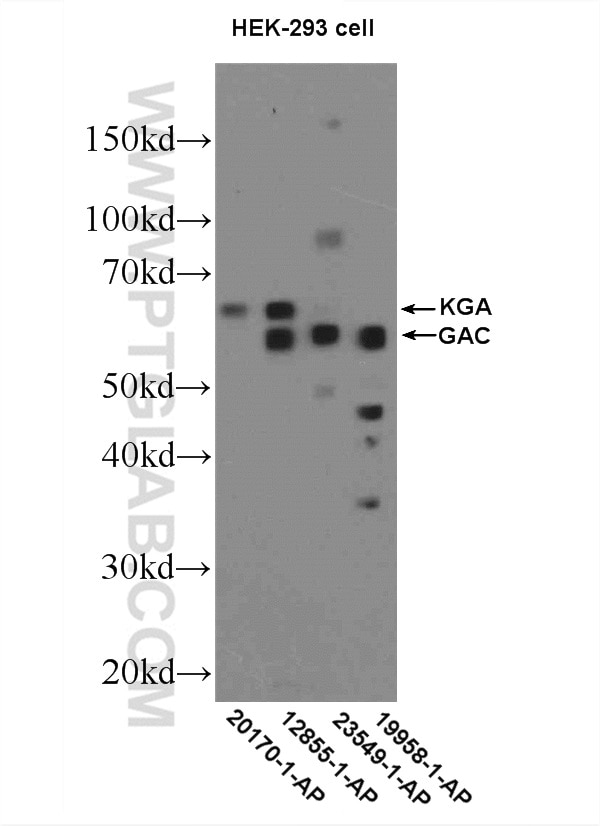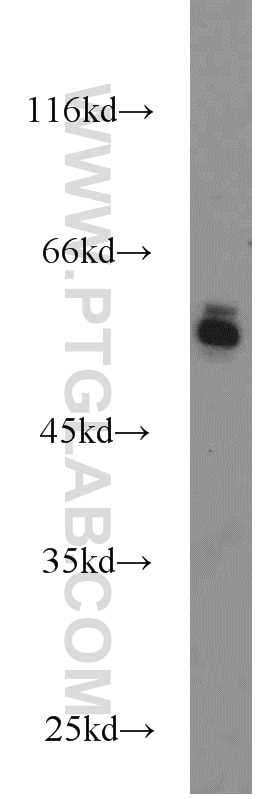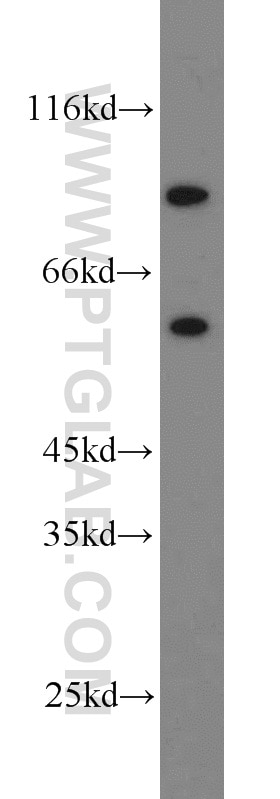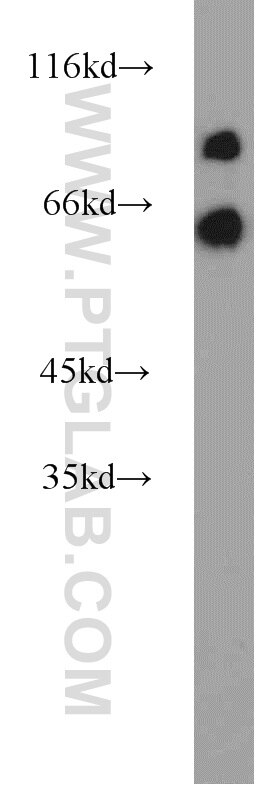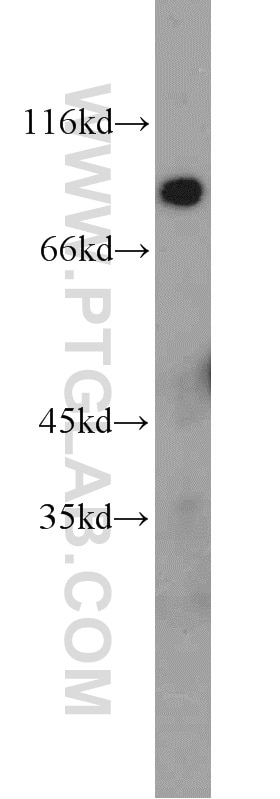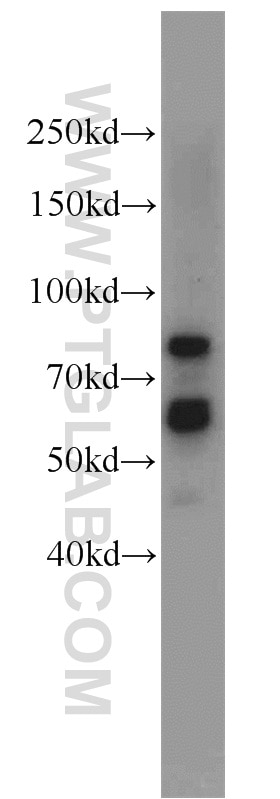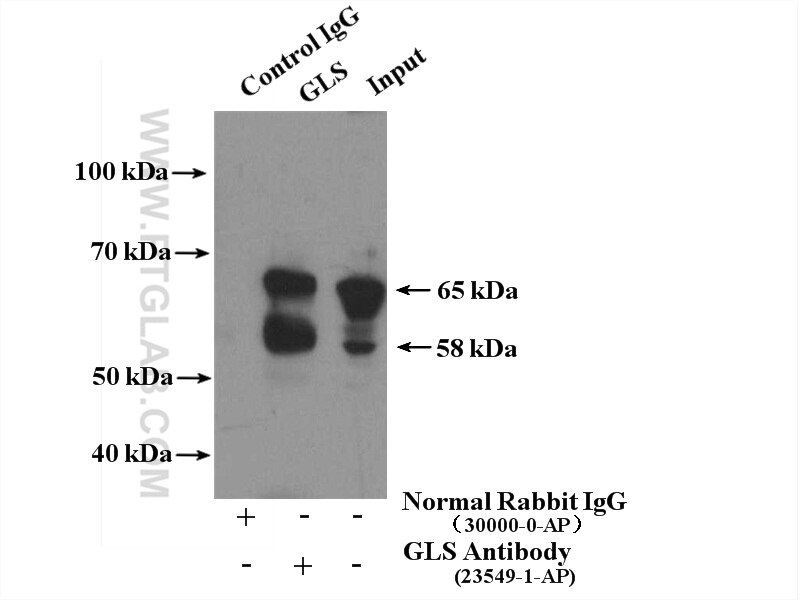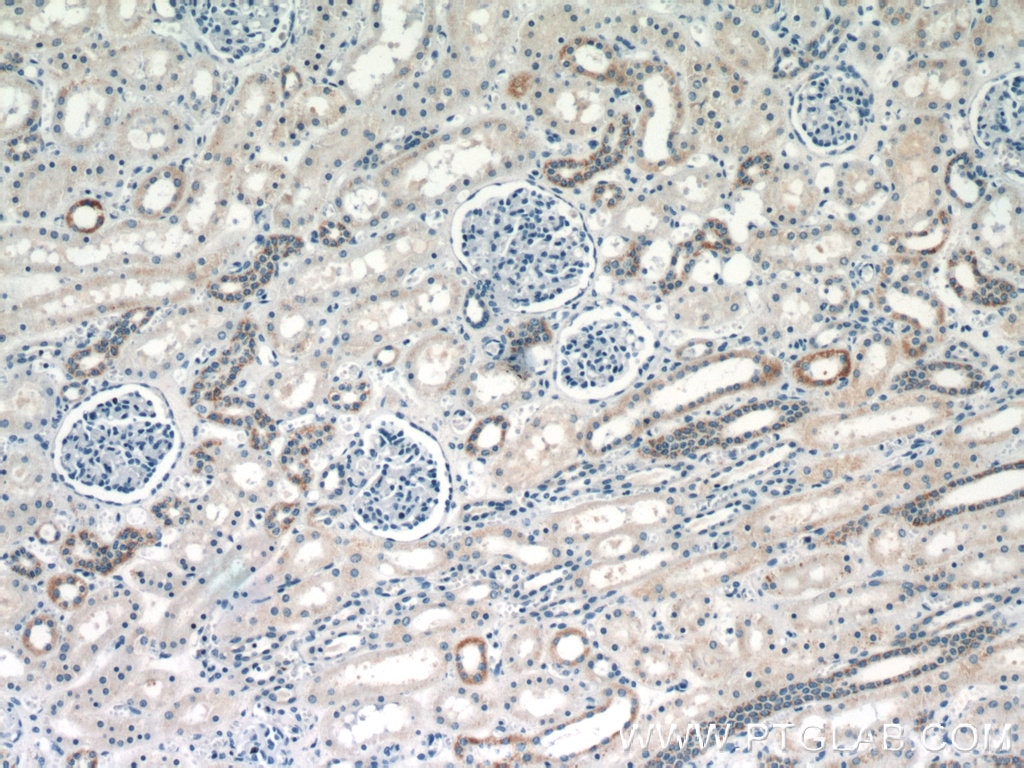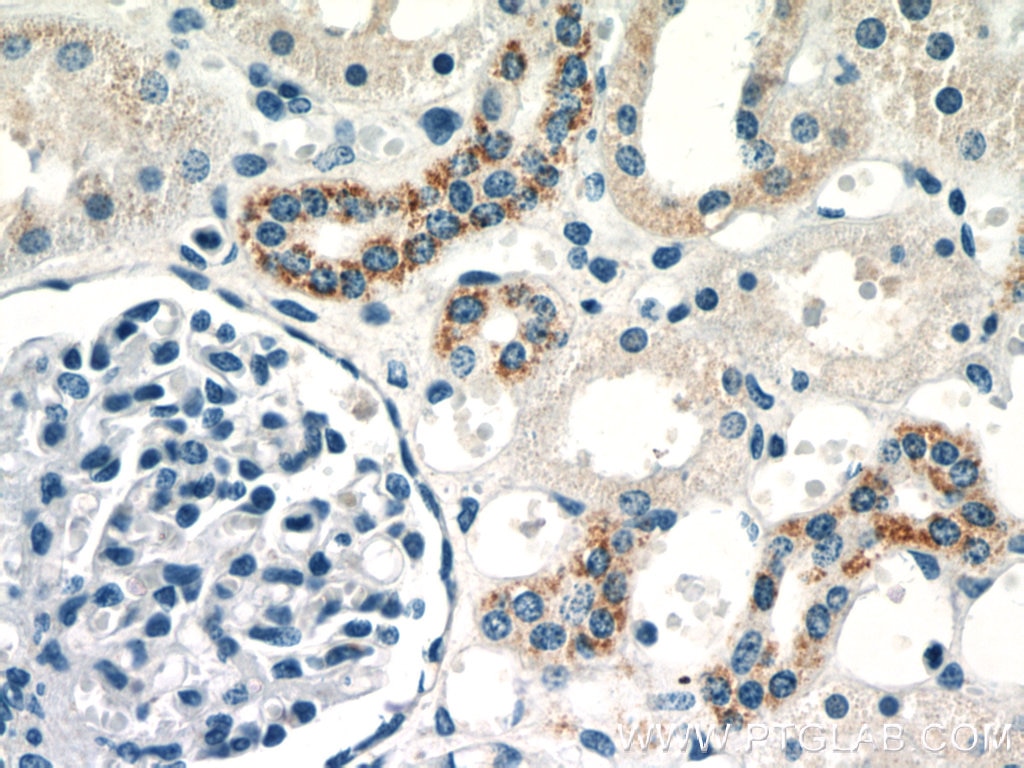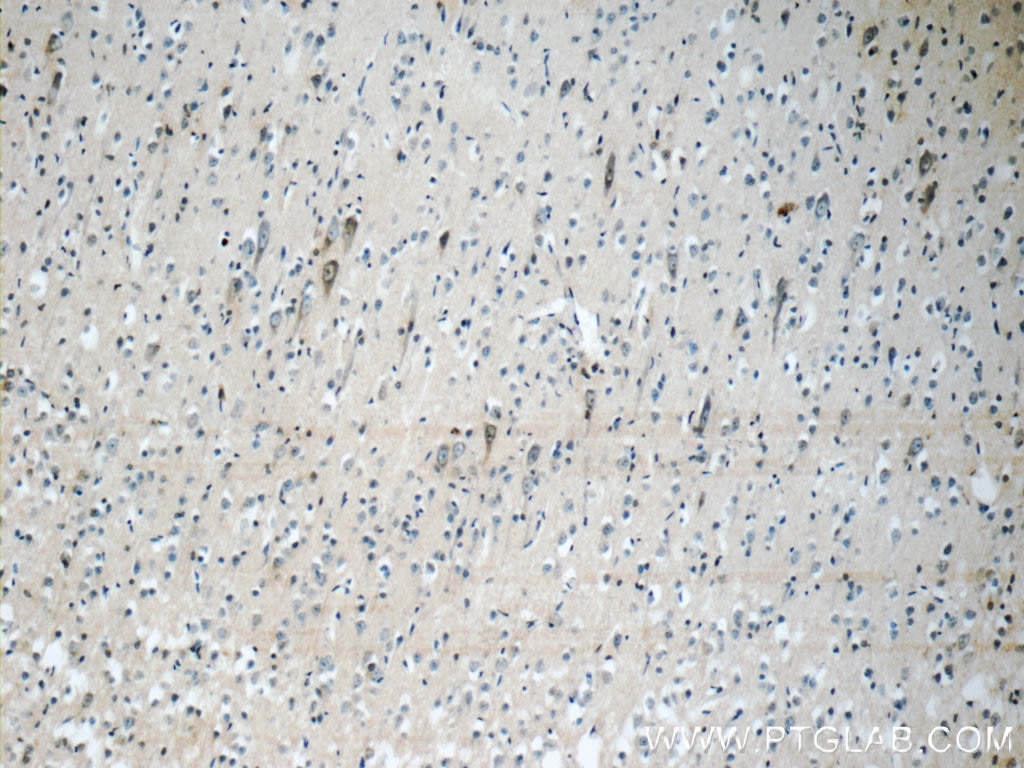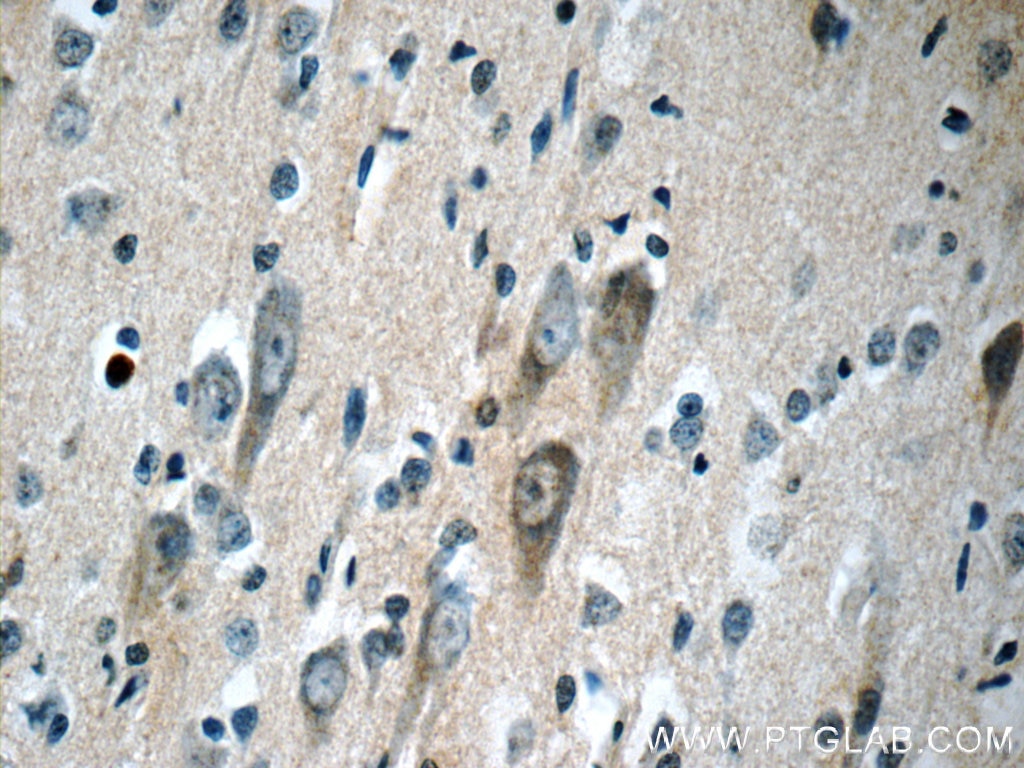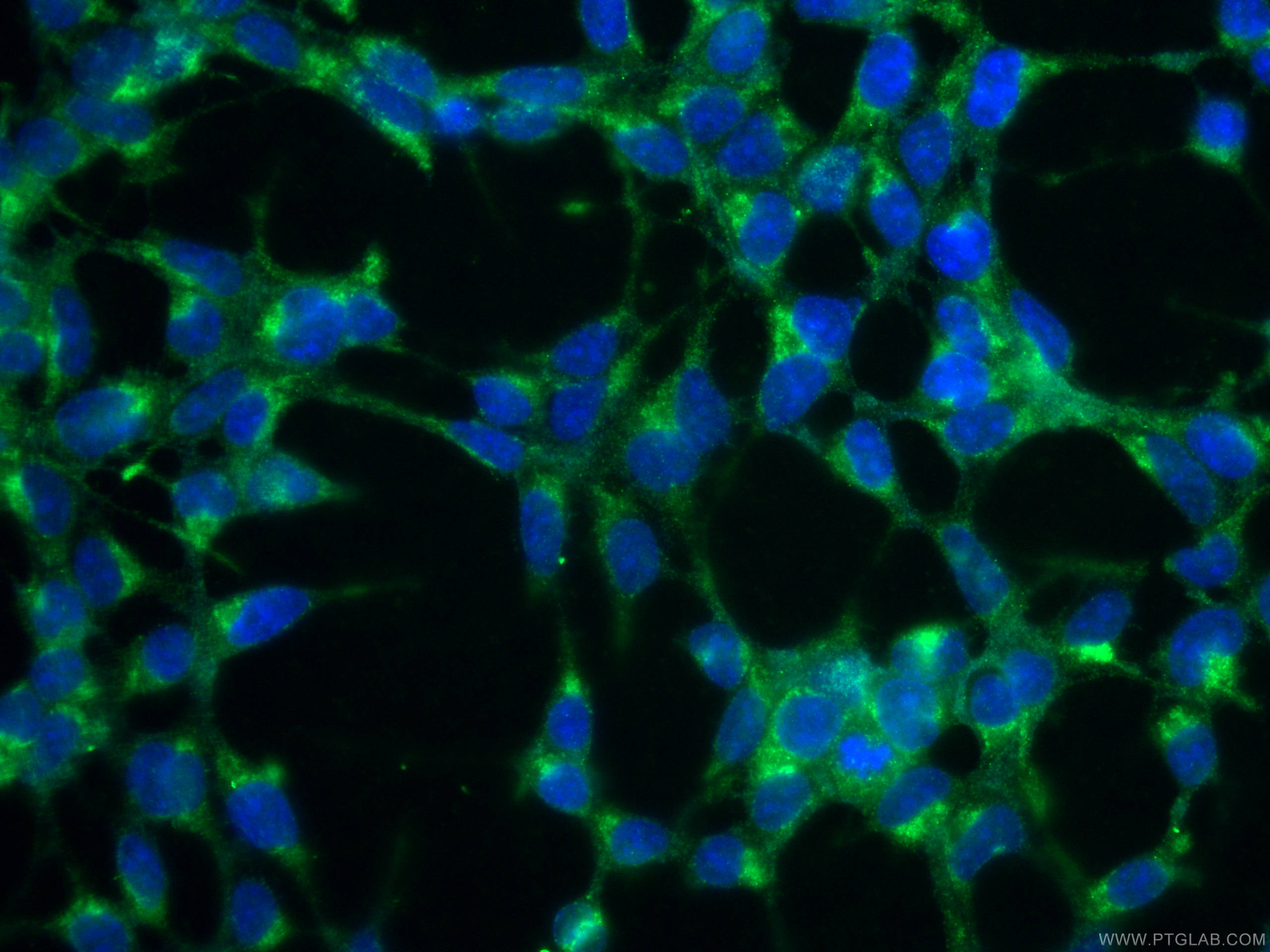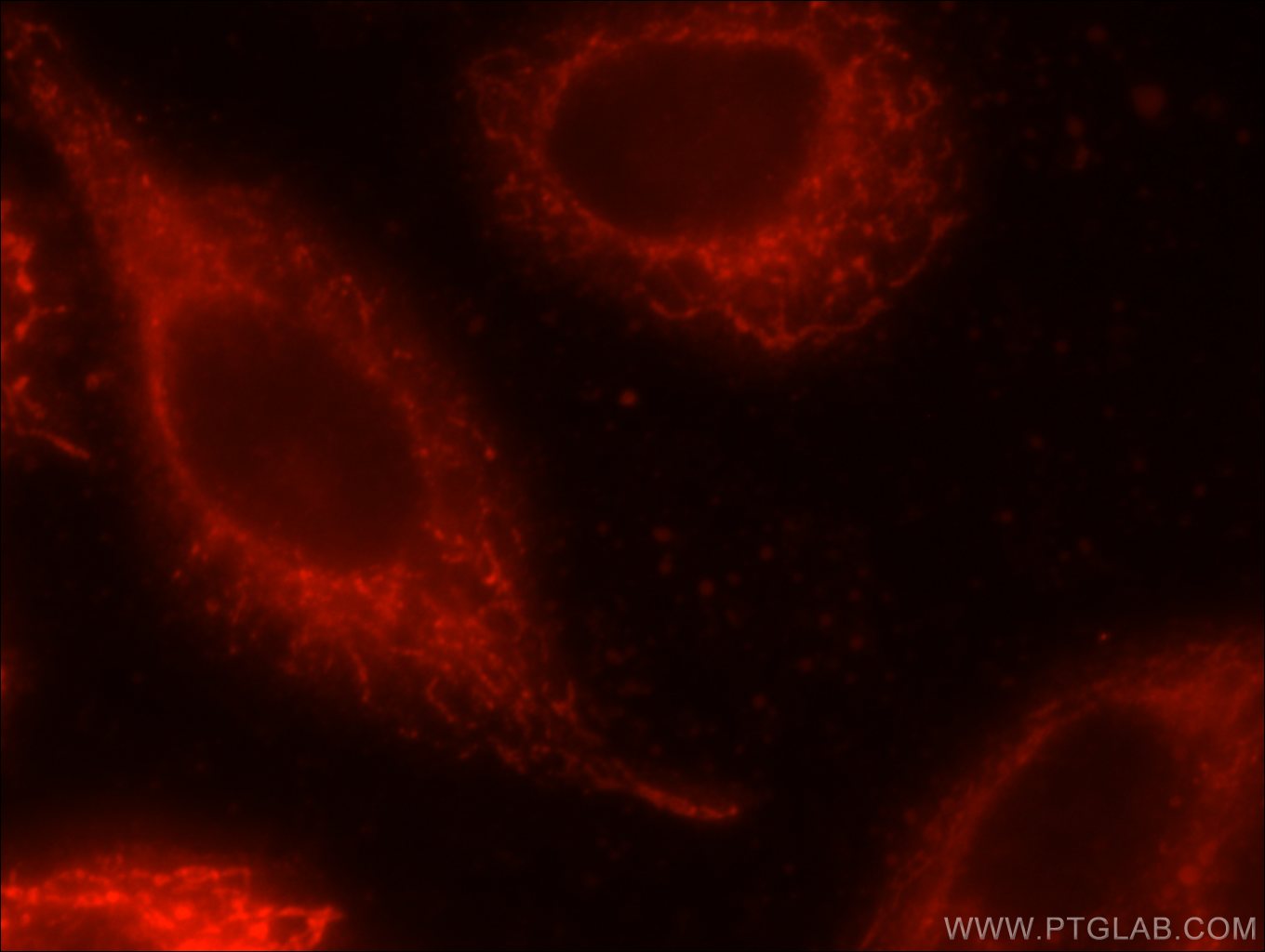- Phare
- Validé par KD/KO
Anticorps Polyclonal de lapin anti-KGA/GAM/GAC
KGA/GAM/GAC Polyclonal Antibody for WB, IP, IF, IHC, ELISA
Hôte / Isotype
Lapin / IgG
Réactivité testée
Humain, rat, souris
Applications
WB, IHC, IF/ICC, IP, ELISA
Conjugaison
Non conjugué
N° de cat : 23549-1-AP
Synonymes
Galerie de données de validation
Applications testées
| Résultats positifs en WB | cellules HEK-293, cellules HeLa, tissu cérébral de rat, tissu cérébral de souris, tissu hépatique de souris |
| Résultats positifs en IP | cellules HEK-293 |
| Résultats positifs en IHC | tissu rénal humain, tissu cérébral humain il est suggéré de démasquer l'antigène avec un tampon de TE buffer pH 9.0; (*) À défaut, 'le démasquage de l'antigène peut être 'effectué avec un tampon citrate pH 6,0. |
| Résultats positifs en IF/ICC | cellules HEK-293, cellules HeLa |
Dilution recommandée
| Application | Dilution |
|---|---|
| Western Blot (WB) | WB : 1:500-1:1000 |
| Immunoprécipitation (IP) | IP : 0.5-4.0 ug for 1.0-3.0 mg of total protein lysate |
| Immunohistochimie (IHC) | IHC : 1:20-1:200 |
| Immunofluorescence (IF)/ICC | IF/ICC : 1:50-1:500 |
| It is recommended that this reagent should be titrated in each testing system to obtain optimal results. | |
| Sample-dependent, check data in validation data gallery | |
Applications publiées
| KD/KO | See 1 publications below |
| WB | See 3 publications below |
| IHC | See 1 publications below |
| IF | See 1 publications below |
Informations sur le produit
23549-1-AP cible KGA/GAM/GAC dans les applications de WB, IHC, IF/ICC, IP, ELISA et montre une réactivité avec des échantillons Humain, rat, souris
| Réactivité | Humain, rat, souris |
| Réactivité citée | Humain |
| Hôte / Isotype | Lapin / IgG |
| Clonalité | Polyclonal |
| Type | Anticorps |
| Immunogène | KGA/GAM/GAC Protéine recombinante Ag20354 |
| Nom complet | glutaminase |
| Masse moléculaire calculée | 669 aa, 73 kDa |
| Poids moléculaire observé | 58 kDa, 65 kDa, 83 kDa |
| Numéro d’acquisition GenBank | BC038507 |
| Symbole du gène | GLS |
| Identification du gène (NCBI) | 2744 |
| Conjugaison | Non conjugué |
| Forme | Liquide |
| Méthode de purification | Purification par affinité contre l'antigène |
| Tampon de stockage | PBS avec azoture de sodium à 0,02 % et glycérol à 50 % pH 7,3 |
| Conditions de stockage | Stocker à -20°C. Stable pendant un an après l'expédition. L'aliquotage n'est pas nécessaire pour le stockage à -20oC Les 20ul contiennent 0,1% de BSA. |
Informations générales
GLS, also named as GLS1 and KIAA0838, belongs to the glutaminase family. It catalyzes the first reaction in the primary pathway for the renal catabolism of glutamine. Glutaminase-, glutamate-, and taurine-immunoreactive neurons develop neurofibrillary tangles in Alzheimer's disease.The glutaminase band in AA/C1 cells is more intense than in HT29 cells, in accordance with measurements of glutaminase activity, and had the same molecular mass of approx. 63 kDa(PMID:12408749). Ping Gao et al. (2009) determined that mitochondrial glutaminase expression (GLS, molecular mass of ~58 kDa) is increased ~10-fold in response to Myc. It also reveals a molecular weight of 83-84 kDa as a phosphate-dependent glutaminase(PMID:447624;7512428). GLS has 3 isoforms produced by alternative splicing and this antibody can recognize all the 3 isoforms(KGA,GAM,GAC) of GLS.
Protocole
| Product Specific Protocols | |
|---|---|
| WB protocol for KGA/GAM/GAC antibody 23549-1-AP | Download protocol |
| IHC protocol for KGA/GAM/GAC antibody 23549-1-AP | Download protocol |
| IF protocol for KGA/GAM/GAC antibody 23549-1-AP | Download protocol |
| IP protocol for KGA/GAM/GAC antibody 23549-1-AP | Download protocol |
| Standard Protocols | |
|---|---|
| Click here to view our Standard Protocols |
Publications
| Species | Application | Title |
|---|---|---|
Mol Cell Filamentous GLS1 promotes ROS-induced apoptosis upon glutamine deprivation via insufficient asparagine synthesis.
| ||
Redox Biol Mitochondrial thiol modification by a targeted electrophile inhibits metabolism in breast adenocarcinoma cells by inhibiting enzyme activity and protein levels. | ||
Biosci Rep Progesterone inhibits endometrial cancer growth by inhibiting glutamine metabolism through ASCT2 |
